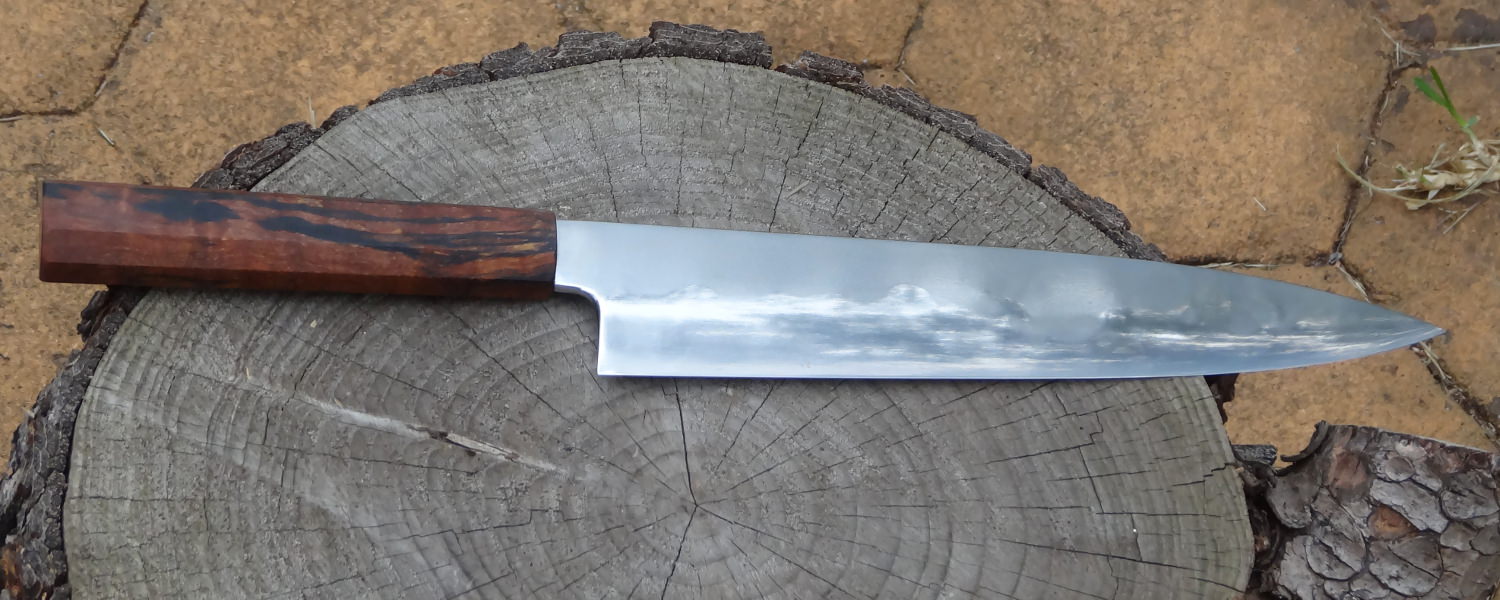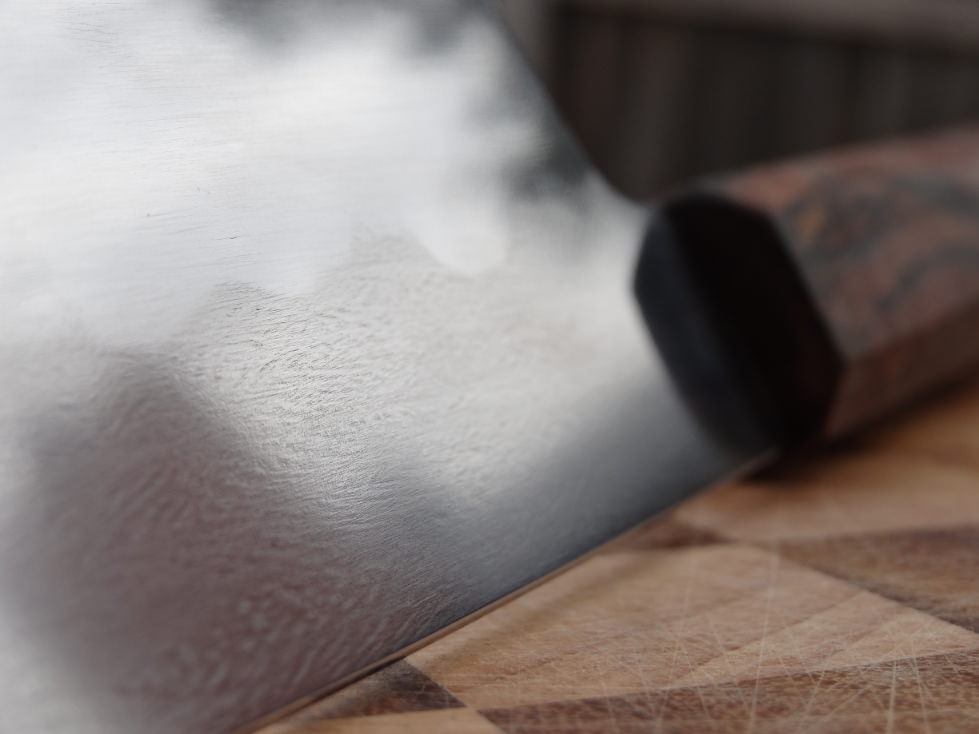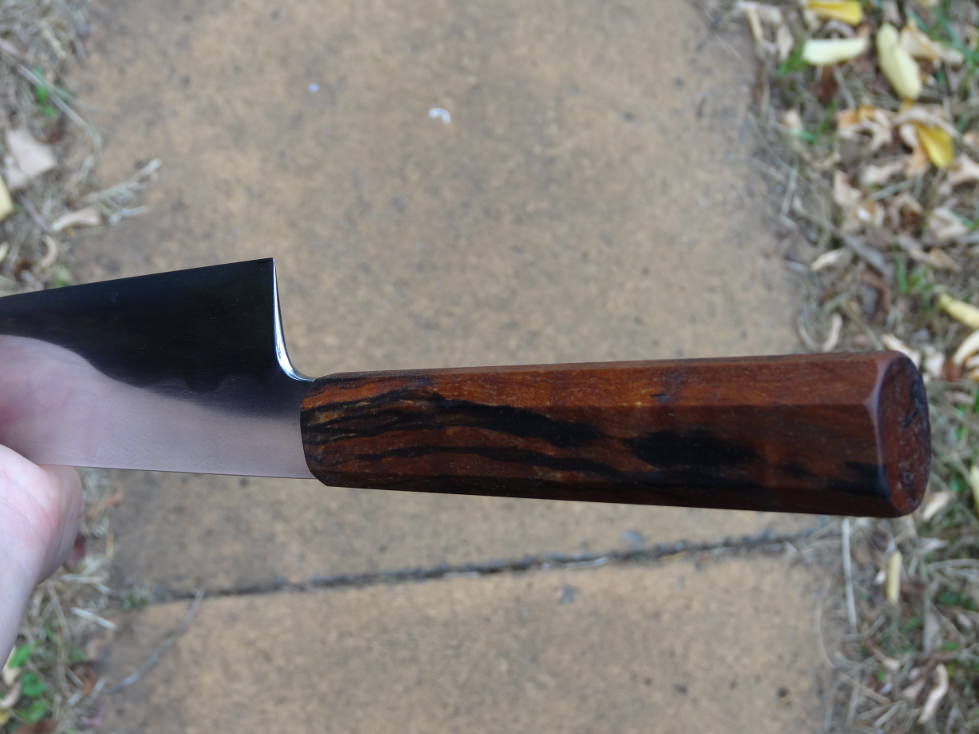Kippington
A small green parrot
I'm polishing up a 1095 mono-steel blade and there's a funky wood-grain look going on above the hamon. It doesn't show up on the hardened steel yet the whole blade has been etched and polished in the same way. I tried both ferric chloride and hot vinegar etches and it happens the same. The effect is really subtle and hard to pick up on camera.
Has anyone seen this on other mono-steel knives? What's going on metallurgically? It reminds me of the appearance of wrought iron cladding, but obviously that's not the case here.
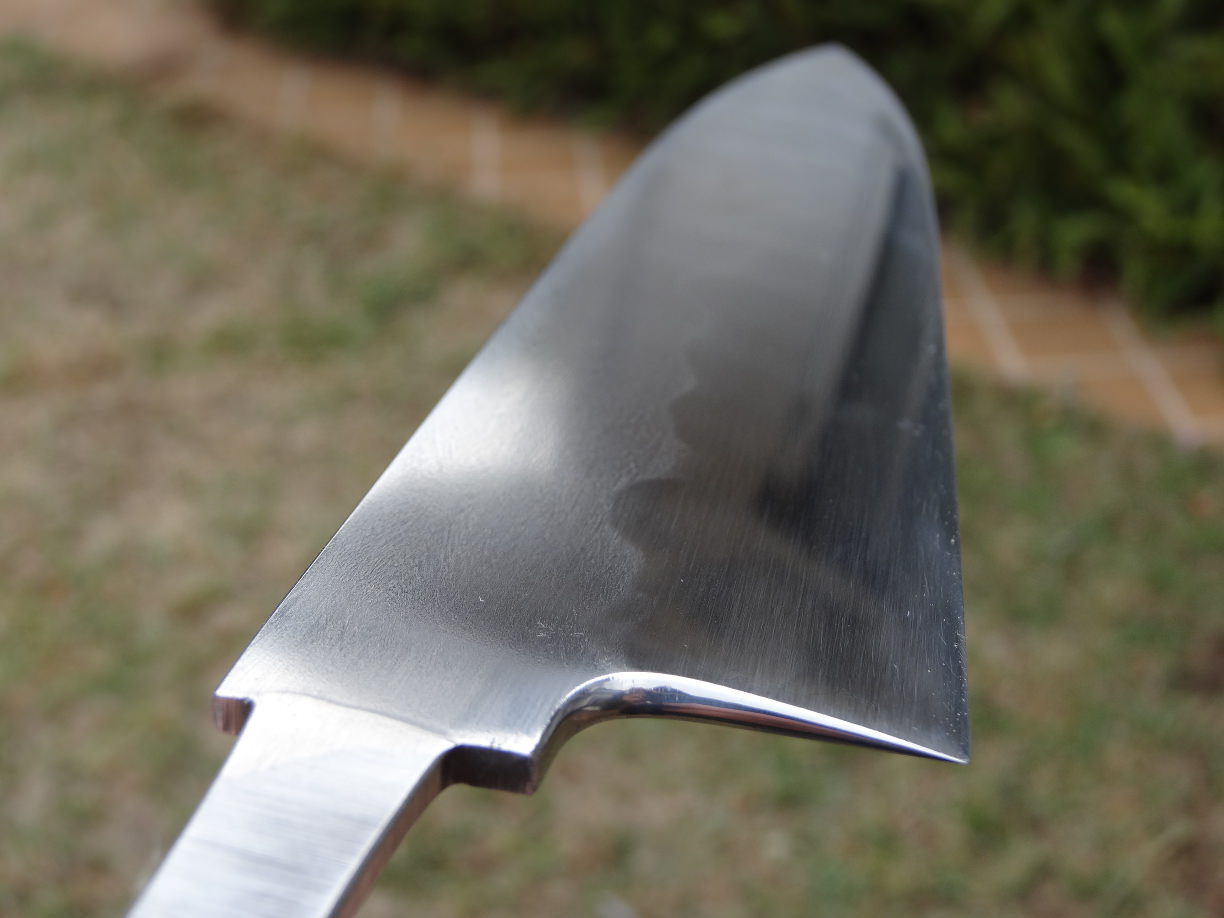
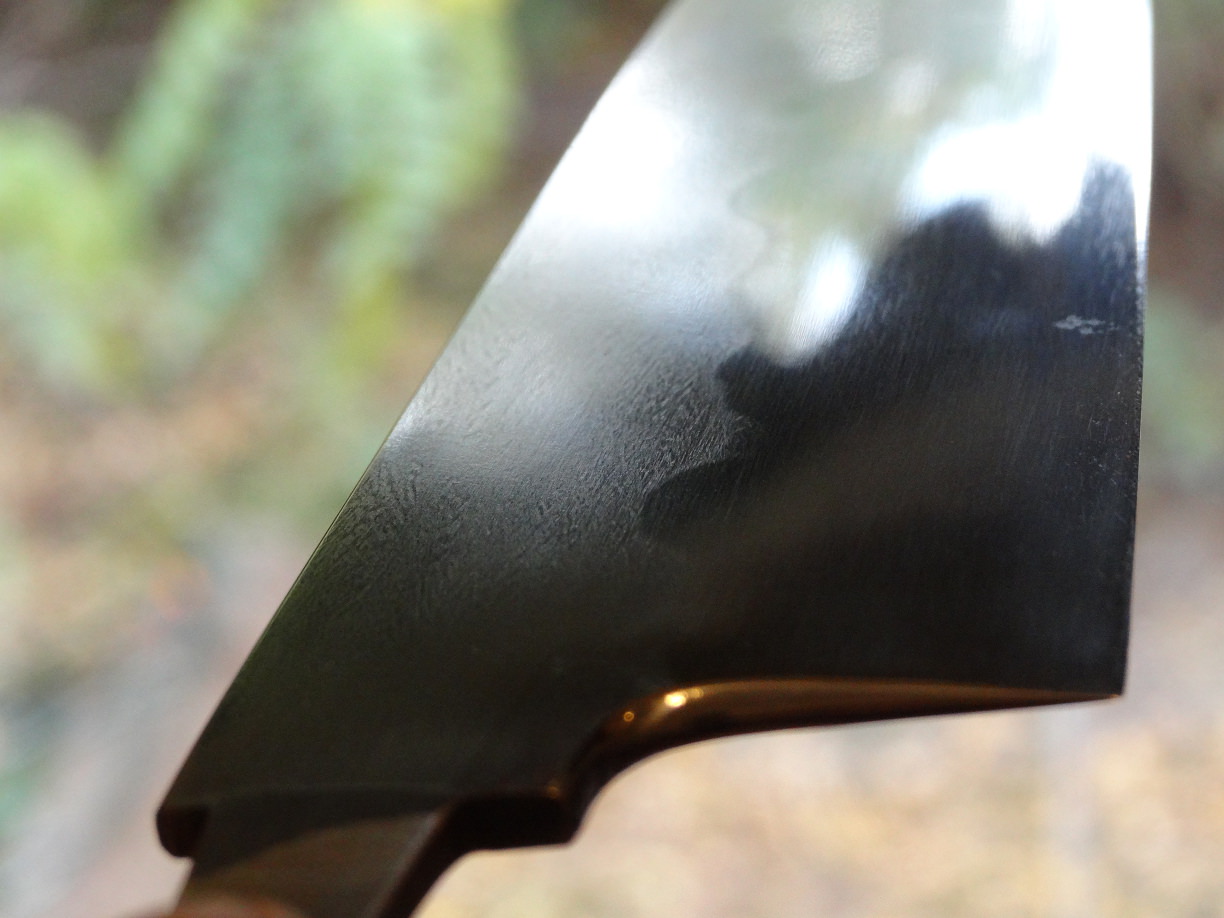
Has anyone seen this on other mono-steel knives? What's going on metallurgically? It reminds me of the appearance of wrought iron cladding, but obviously that's not the case here.







